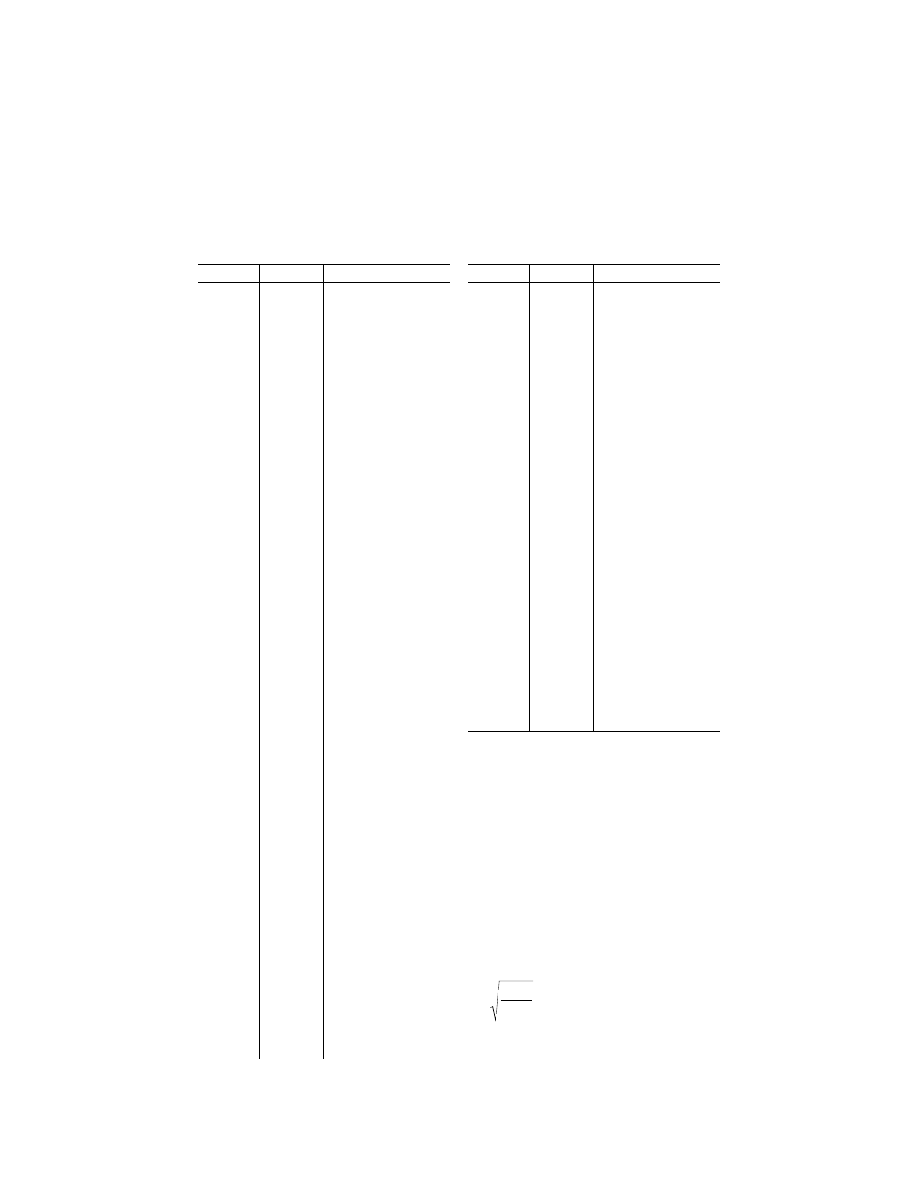
794
14 CFR Ch. I (1–1–19 Edition)
Pt. 36, App. A
Symbol Unit
Meaning
SPL
′
(i, k) ....
dB re ...........
20
µ
Pa
Adjusted sound pressure
level.
The first approxima-
tion to background sound
pressure level in the i-th
one-third octave band for
the k-th instant of time.
SPL(i) ...........
dB re ...........
20
µ
Pa
Maximum sound pressure
level.
The sound pressure
level that occurs in the i-th
one-third octave band of
the spectrum for PNLTM.
SPL(i)
r
..........
dB re ...........
20
µ
Pa
Corrected maximum sound
pressure level.
The sound
pressure level that occurs
in the i-th one-third octave
band of the spectrum for
PNLTM corrected for at-
mospheric sound absorp-
tion.
SPL
′
(i, k) ....
dB re ...........
20
µ
Pa
Final background sound pres-
sure level.
The second and
final approximation to back-
ground sound pressure
level in the i-th one-third
octave band for the k-th in-
stant of time.
t ....................
s ..................
Elapsed time.
The length of
time measured from a ref-
erence zero.
t(1), t(2) ........
s ..................
Time limit.
The beginning and
end, respectively, of the
noise time history defined
by h.
D
t .................
s ..................
Time increment.
The equal in-
crements of time for which
PNL(k) and PNLT(k) are
calculated.
T ..................
s ..................
Normalizing time constant.
The length of time used as
a reference in the integra-
tion method for computing
duration corrections, where
T = 10s.
t(
°
F) (
°
C) ......
°
F,
°
C ..........
Temperature.
The ambient air
temperature.
a
(i) ...............
dB/1000ft db/
100m.
Test atmospheric absorption.
The atmospheric attenu-
ation of sound that occurs
in the i-th one-third octave
band at the measured air
temperature and relative
humidity.
a
(i)
o
..............
dB/1000ft db/
100m.
Reference atmospheric ab-
sorption.
The atmospheric
attenuation of sound that
occurs in the i-th one-third
octave band at a reference
air temperature and relative
humidity.
A
1
.................
Degrees .......
First constant climb angle
(Gear up, speed of at least
V
2
+ 10 kt (V
2
+ 19 km/h),
takeoff thrust).
A
2
.................
Degrees .......
Second constant climb angle
(Gear up, speed of at least
V
2
+ 10 kt (V
2
+ 19 km/h),
after cut-back).
d
...................
e
Degrees .......
Thrust cutback angles.
The
angles defining the points
on the takeoff flight path at
which thrust reduction is
started and ended respec-
tively.
h
..................
Degrees .......
Approach angle.
Symbol Unit
Meaning
h
r
.................
Degrees .......
Reference approach angle.
q
...................
Degrees .......
Noise angle (relative to flight
path).
The angle between
the flight path and noise
path. It is identical for both
measured and corrected
flight paths.
y
..................
Degrees .......
Noise angle (relative to
ground).
The angle be-
tween the noise path and
the ground. It is identical for
both measured and cor-
rected flight paths.
µ
..................
.....................
Engine noise emission pa-
rameter.
µ
r
..................
.....................
Reference engine noise emis-
sion parameter.
D
1
.................
EPNdB ........
PNLT correction.
The correc-
tion to be added to the
EPNL calculated from
measured data to account
for noise level changes due
to differences in atmos-
pheric absorption and noise
path length between ref-
erence and test conditions.
D
2
.................
EPNdB ........
Adjustment to duration correc-
tion.
The adjustment to be
made to the EPNL cal-
culated from measured
data to account for noise
level changes due to the
noise duration between ref-
erence and test conditions.
D
3
.................
EPNdB ........
Source noise adjustment.
The
adjustment to be made to
the EPNL calculated from
measured data to account
for noise level changes due
to differences between ref-
erence and test engine op-
erating conditions.
Section A36.7 Sound Attenuation in Air
A36.7.1 The atmospheric attenuation of
sound must be determined in accordance
with the procedure presented in section
A36.7.2.
A36.7.2 The relationship between sound at-
tenuation, frequency, temperature, and hu-
midity is expressed by the following equa-
tions.
A36.7.2(a) For calculations using the
English System of Units:
α
η δ
θ
θ
(i)
10
2.05 log
log
0
0
=
+
( )
×
(
)
+
×
−
[
]
( )
+
×
−
[
]
−
−
f
f
/
.33
.
.
.
1000
6
10
1 45325
4 6833 10
2 4215
4
3
10
and
δ
θ
θ
θ
=
( )
×
−
+
×
(
)
−
×
+
×
(
)
−
−
−
1010
10
10
1 97274664 2 288074 10
9 589 10
3 0 10
2
5 2
7 3
f
0
log H
.
.
.
.
VerDate Sep<11>2014
12:50 Apr 30, 2019
Jkt 247046
PO 00000
Frm 00804
Fmt 8010
Sfmt 8006
Y:\SGML\247046.XXX
247046
ER08JY02.010</MATH>
ER08JY02.011</MATH>
spaschal on DSK3GDR082PROD with CFR